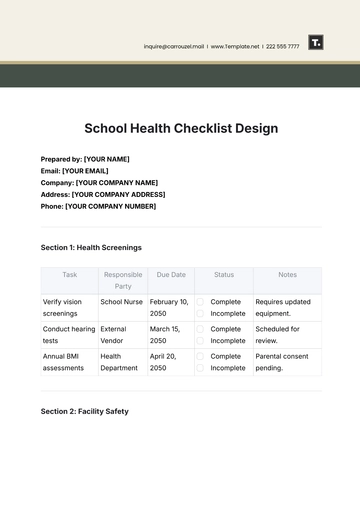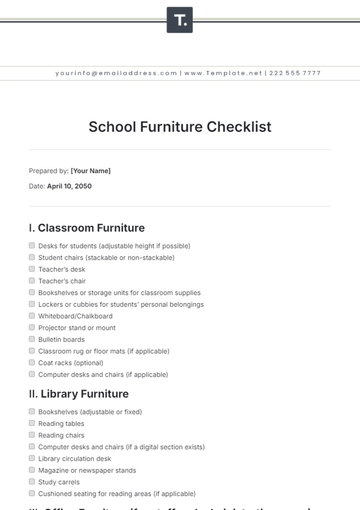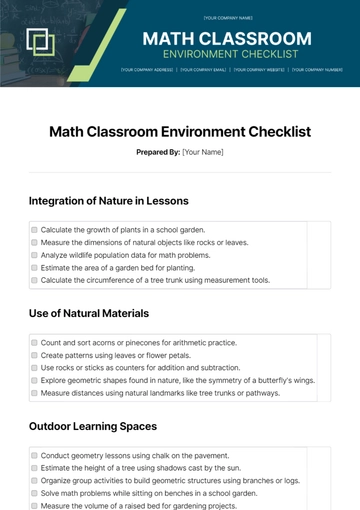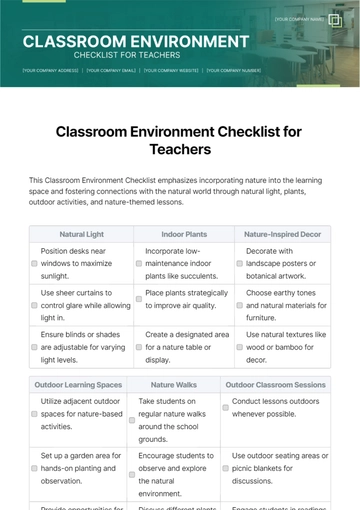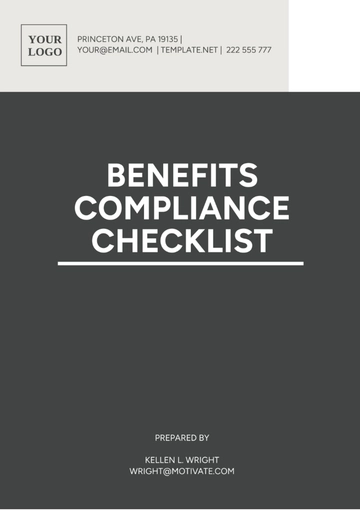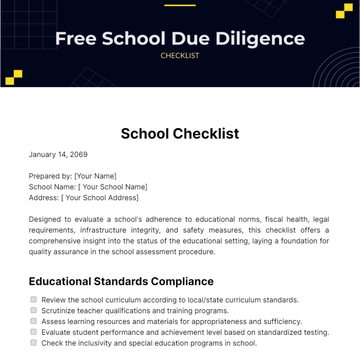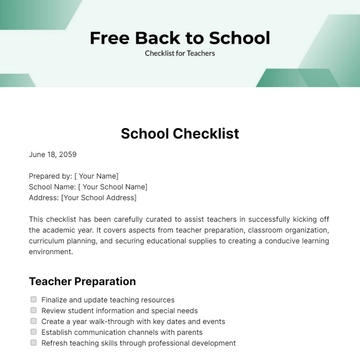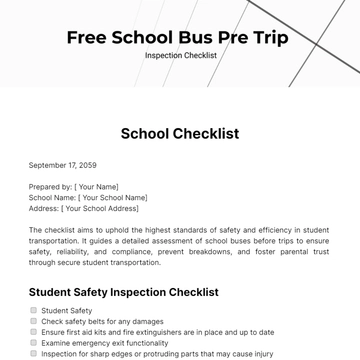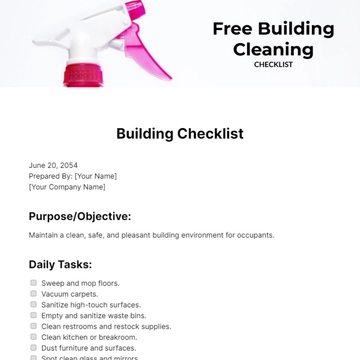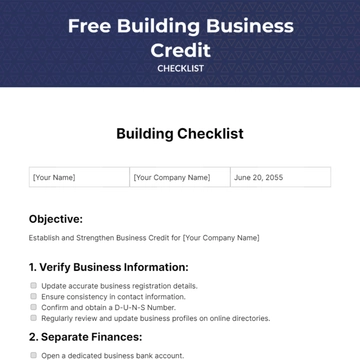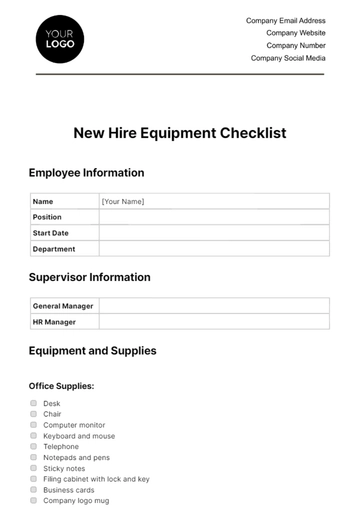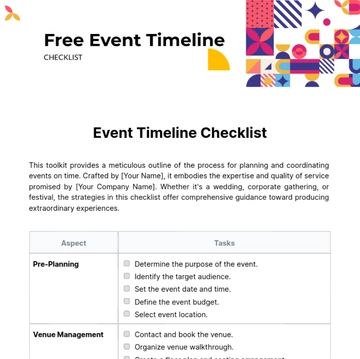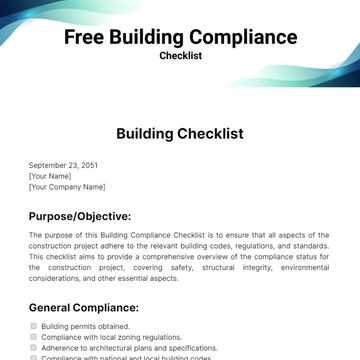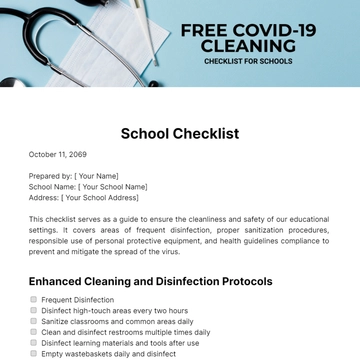Free Company Accounting Checklist
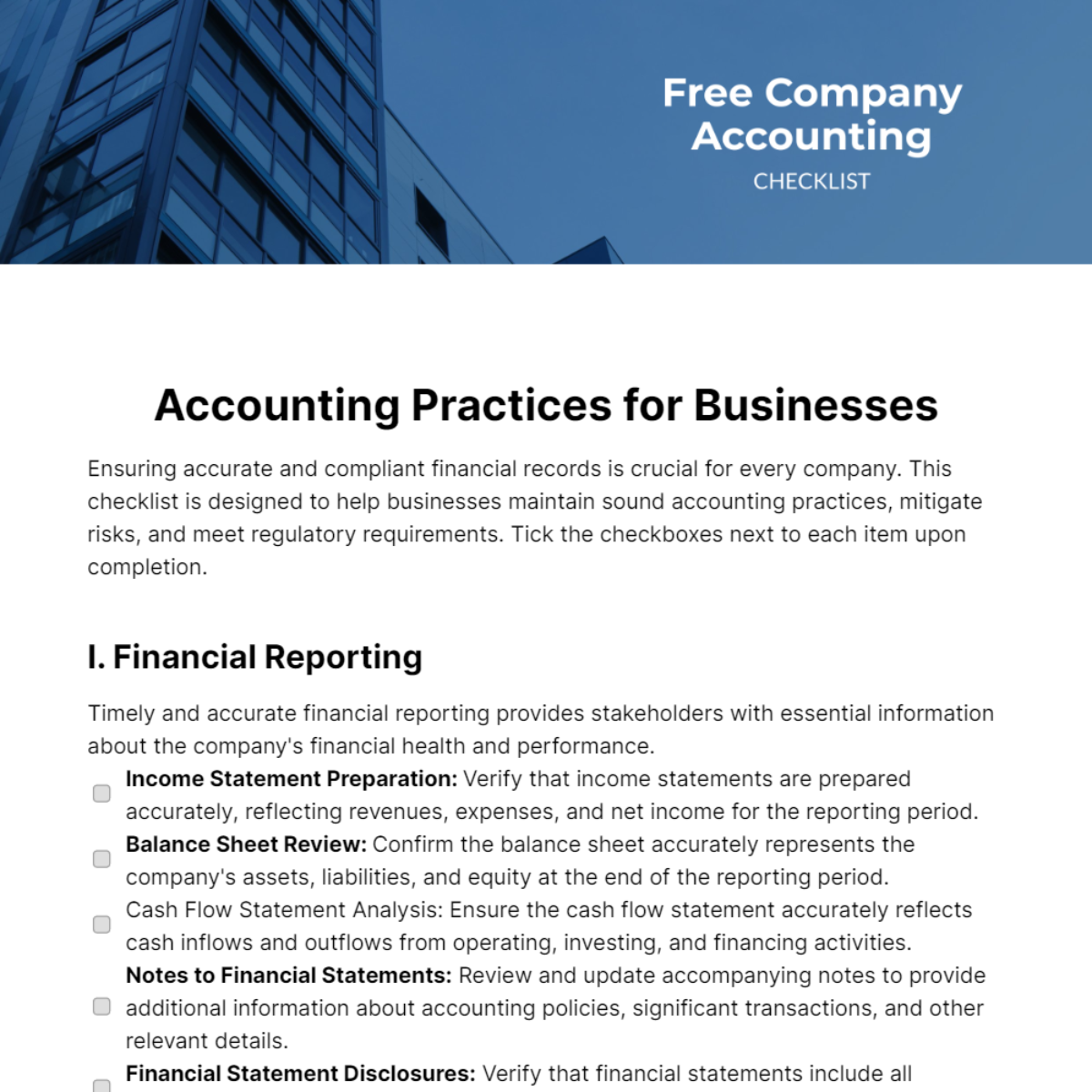
Ensuring accurate and compliant financial records is crucial for every company. This checklist is designed to help businesses maintain sound accounting practices, mitigate risks, and meet regulatory requirements. Tick the checkboxes next to each item upon completion.
I. Financial Reporting
Timely and accurate financial reporting provides stakeholders with essential information about the company's financial health and performance.
Income Statement Preparation: Verify that income statements are prepared accurately, reflecting revenues, expenses, and net income for the reporting period.
Balance Sheet Review: Confirm the balance sheet accurately represents the company's assets, liabilities, and equity at the end of the reporting period.
Cash Flow Statement Analysis: Ensure the cash flow statement accurately reflects cash inflows and outflows from operating, investing, and financing activities.
Notes to Financial Statements: Review and update accompanying notes to provide additional information about accounting policies, significant transactions, and other relevant details.
Financial Statement Disclosures: Verify that financial statements include all required disclosures as per accounting standards and regulatory guidelines.
II. Internal Controls
Effective internal controls safeguard company assets, prevent fraud, and ensure the reliability of financial reporting.
Segregation of Duties: Confirm that duties related to financial transactions are appropriately segregated to prevent conflicts of interest and reduce the risk of errors or fraud.
Authorization Procedures: Ensure there are clear procedures in place for authorizing and approving financial transactions, such as purchases, payments, and investments.
Documented Policies and Procedures: Review and update accounting policies and procedures manuals to ensure they accurately reflect current practices and compliance requirements.
Regular Reconciliation: Conduct regular reconciliations of bank accounts, accounts receivable, and accounts payable to identify discrepancies and ensure accuracy.
Internal Audit Procedures: Establish an internal audit function or engage external auditors to periodically review internal controls and identify areas for improvement.
III. Compliance and Regulations
Compliance with accounting standards and regulatory requirements is essential to avoid penalties and maintain trust with stakeholders.
GAAP Compliance: Ensure that financial statements are prepared in accordance with Generally Accepted Accounting Principles (GAAP) or applicable accounting standards.
Tax Compliance: Verify that tax filings are accurate and submitted on time, including income tax returns, sales tax filings, and payroll tax returns.
Regulatory Filings: Monitor deadlines for regulatory filings, such as annual reports, SEC filings, and other industry-specific disclosures.
Audit Preparation: Prepare for external audits by organizing documentation, addressing audit inquiries, and resolving any potential issues in advance.
Data Security and Privacy: Implement measures to safeguard financial data and ensure compliance with data protection regulations, such as GDPR or CCPA.
IV. Budgeting and Forecasting
Budgeting and forecasting help companies plan for future growth, manage resources effectively, and make informed business decisions.
Budget Development: Develop comprehensive budgets for revenue, expenses, and capital expenditures based on historical data, market trends, and strategic objectives.
Variance Analysis: Compare actual financial performance against budgeted amounts to identify variances and investigate reasons for deviations.
Cash Flow Forecasting: Forecast future cash flows to ensure adequate liquidity for operating expenses, debt service, and capital investments.
Scenario Planning: Conduct scenario analysis to assess the impact of various economic or operational scenarios on financial performance and cash flow.
Budget Review and Approval: Establish procedures for reviewing and approving budgets, involving relevant stakeholders to ensure alignment with strategic goals and resource allocation priorities.
- 100% Customizable, free editor
- Access 1 Million+ Templates, photo’s & graphics
- Download or share as a template
- Click and replace photos, graphics, text, backgrounds
- Resize, crop, AI write & more
- Access advanced editor
Elevate your business using this Company Accounting Checklist Template. This fully customizable and editable template is designed to streamline your accounting processes efficiently. Tailor it to your unique needs directly in our AI Editor Tool, making organization and accuracy simpler than ever. Upgrade your financial management today together with Template.net!
You may also like
- Cleaning Checklist
- Daily Checklist
- Travel Checklist
- Self Care Checklist
- Risk Assessment Checklist
- Onboarding Checklist
- Quality Checklist
- Compliance Checklist
- Audit Checklist
- Registry Checklist
- HR Checklist
- Restaurant Checklist
- Checklist Layout
- Creative Checklist
- Sales Checklist
- Construction Checklist
- Task Checklist
- Professional Checklist
- Hotel Checklist
- Employee Checklist
- Moving Checklist
- Marketing Checklist
- Accounting Checklist
- Camping Checklist
- Packing Checklist
- Real Estate Checklist
- Cleaning Checklist Service
- New Employee Checklist
- Food Checklist
- Home Inspection Checklist
- Advertising Checklist
- Event Checklist
- SEO Checklist
- Assessment Checklist
- Inspection Checklist
- Baby Registry Checklist
- Induction Checklist
- Employee Training Checklist
- Medical Checklist
- Safety Checklist
- Site Checklist
- Job Checklist
- Service Checklist
- Nanny Checklist
- Building Checklist
- Work Checklist
- Office Checklist
- Training Checklist
- Website Checklist
- IT and Software Checklist
- Performance Checklist
- Project Checklist
- Startup Checklist
- Education Checklist
- Home Checklist
- School Checklist
- Maintenance Checklist
- Planning Checklist
- Manager Checklist
- Wedding Checklist
- Vehicle Checklist
- Travel Agency Checklist
- Vehicle Inspection Checklist
- Interior Design Checklist
- Backpacking Checklist
- Business Checklist
- Legal Checklist
- Nursing Home Checklist
- Weekly Checklist
- Recruitment Checklist
- Salon Checklist
- Baby Checklist
- Equipment Checklist
- Trade Show Checklist
- Party Checklist
- Hospital Bag Checklist
- Evaluation Checklist
- Agency Checklist
- First Apartment Checklist
- Hiring Checklist
- Opening Checklist
- Small Business Checklist
- Rental Checklist
- College Dorm Checklist
- New Puppy Checklist
- University Checklist
- Building Maintenance Checklist
- Work From Home Checklist
- Student Checklist
- Application Checklist
